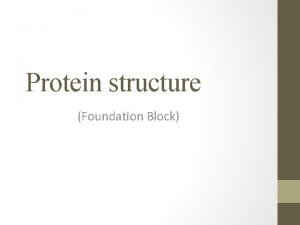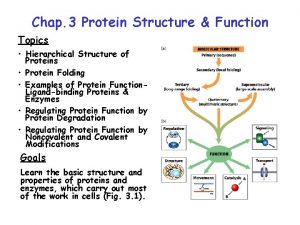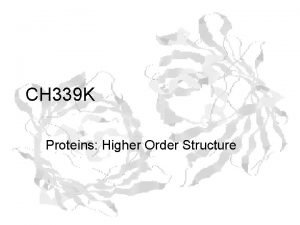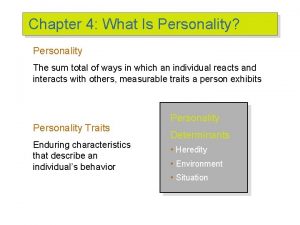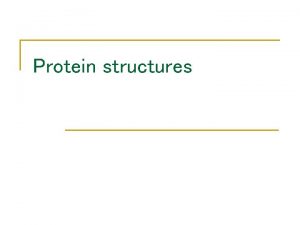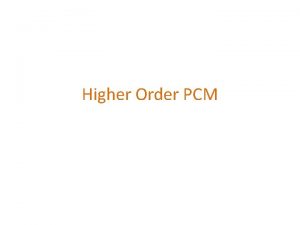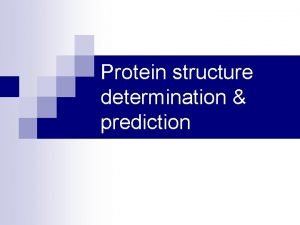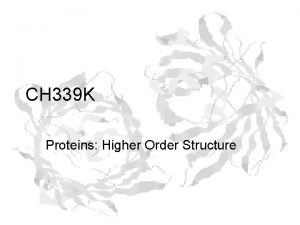Protein Structure 2 Higher Order Protein Structures Hierarchy











- Slides: 11

Protein Structure 2 Higher Order Protein Structures

Hierarchy of Protein Structure Primary sequence The amino acid sequence of a polypeptide, listed from N-terminus to C-terminus. Secondary structure Recurring structural feature of proteins stabilized exclusively by hydrogen bonds between peptide bond elements. Supersecondary structure Recurring structural feature of proteins composed of two or more secondary structural elements. Domain- A segment of protein structure that is autonomously stable. Tertiary structure A stable, independent protein encoded by a single gene. Quaternary structure A complex structure composed of two or more tertiary structure subunits.

Alpha-fibrous proteins: Coiled-coil Helix Supersecondary Structure Heptad repeats in GCN 4 Four-helical bundle

Sequence Comparison Reveals Positional Preference Within Heptad Repeats

Max 1 as an Example of a Leucine Zipper Motif Protein

Parallel and Anti-parallel Beta Sheets anti-parallel

Supersecondary Structures Structure of -grasp fold of ubiquitin showing motif Repeating motifs (n=7) form a Rossmann fold structure

Supersecondary Structures Greek key motif Beta meander motif

-coil- Supersecondary Structure Ipa. H 3. 0

Domains and Tertiary Structure Domains- Structurally autologous structures possessing discrete functions that comprises part of the tertiary structure (beads on a string). Domains can be identified by their characteristic sequences. Ex: DNA binding domains, NAD+/NADP+ binding domains, HECT domains, Zn finger domains, etc. Motif- A highly conserved, short amino acid sequence that identifies a discrete function. Ex: Protein kinase phosphorylation motifs, Ca++ binding motifs, etc. Pyruvate kinase domain structure

Quaternary Structure
 Hierarchy of protein structure
Hierarchy of protein structure Protein structure
Protein structure Higher order structure of proteins
Higher order structure of proteins Via optica
Via optica Higher business management
Higher business management Lateral relationship
Lateral relationship How are the whale flipper and the human arm different
How are the whale flipper and the human arm different Protein pump vs protein channel
Protein pump vs protein channel Protein-protein docking
Protein-protein docking Higher level needs
Higher level needs What is the correct order of ecological hierarchy
What is the correct order of ecological hierarchy Haskell higher order functions
Haskell higher order functions
